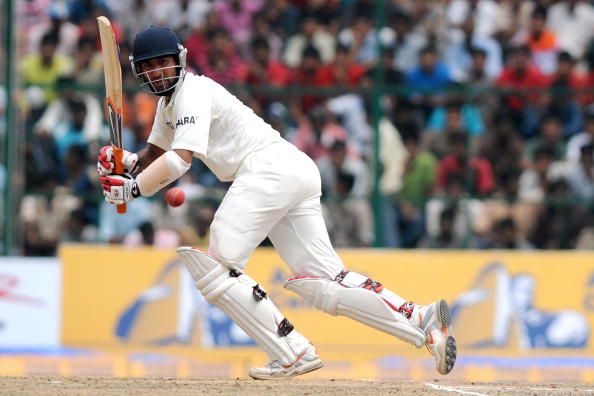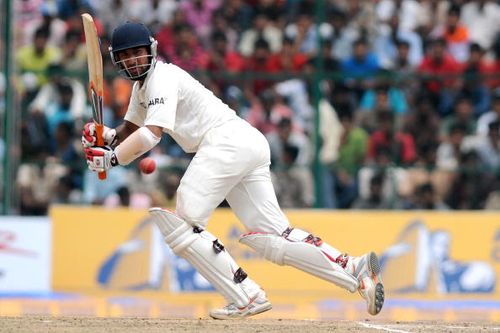
Patience, Persistence, Pujara - In the shadow of the wall
The first day’s play of the first test match between India and New Zealand was perceived to be a day which marked the beginning of a new era for Indian Test Cricket. There was a lot of speculation in the media and a lot of scepticism amongst the former greats of the game whether or not the current crop of players were good enough to fill in the huge gap left by the Laxmans and the Dravids of yesterday (almost literally).

With India losing Gautam Gambhir early in the first hour’s play, all eyes were on young Cheteshwar Pujara, who walked into the middle on a hot day in Hyderabad. He was coming in at number 3, the position until recently held by none other than the Great wall of India, Rahul Dravid, for nearly 15 years of International cricket. There was no devil in the pitch, nor did the opposition look menacing, but it was the very occasion that generated so much pressure, the pressure of living up to the expectations, the pressure to maintain the high bench-marks set by the magical Laxman and the laborious Dravid.
The stance, the poise and the intensity in the eyes were unmistakably similar to Dravid. In fact, the resemblance to Dravid went down to even the bat maker’s name. Well, we had our Rahul “body-double” in the middle. On one occasion, when Pujara lunged forward and played a cover drive boundary to the pacer, one could swear that it was indeed Dravid who was batting in the middle and not some rookie. If anything was to be taken as an announcement of his arrival on the scene, it was this particular cover drive from Pujara that made every Indian sit up and wonder if he was the next “Dravid” on the scene. One big question that still lingered in everybody’s mind was whether he could match his temperament with that of the legend?
Pujara dispelled all doubts whatsoever about his temperament with a patient 119 (224 balls, 15 boundaries, 1 six) , remaining not out at the end of day’s play and guiding India to a healthy 307/5 at the Rajiv Gandhi International Stadium, Hyderabad. This lad, who is known to bat for long durations in the domestic circuit, renewed India’s hopes of finding its next number 3 in the Test line up. It was indeed heartening to see him accumulating runs in the typical old-school-Dravid style, wearing the bowling attack down and waiting for the bowler to make the mistakes.
The “waiting-game” was Dravid’s legacy and today it was Pujara who carried it on to the next generation. It is interesting to wait and watch if the other members of the Indian team, the seniors as well as the juniors, take a leaf out of his book. Ultimately, it’s the time factor that can help in salvaging a draw in any test match, it’s the time factor that ensures that the team batting next gets a deteriorating wicket, it’s the single most important factor that makes Test cricket the real “test”.